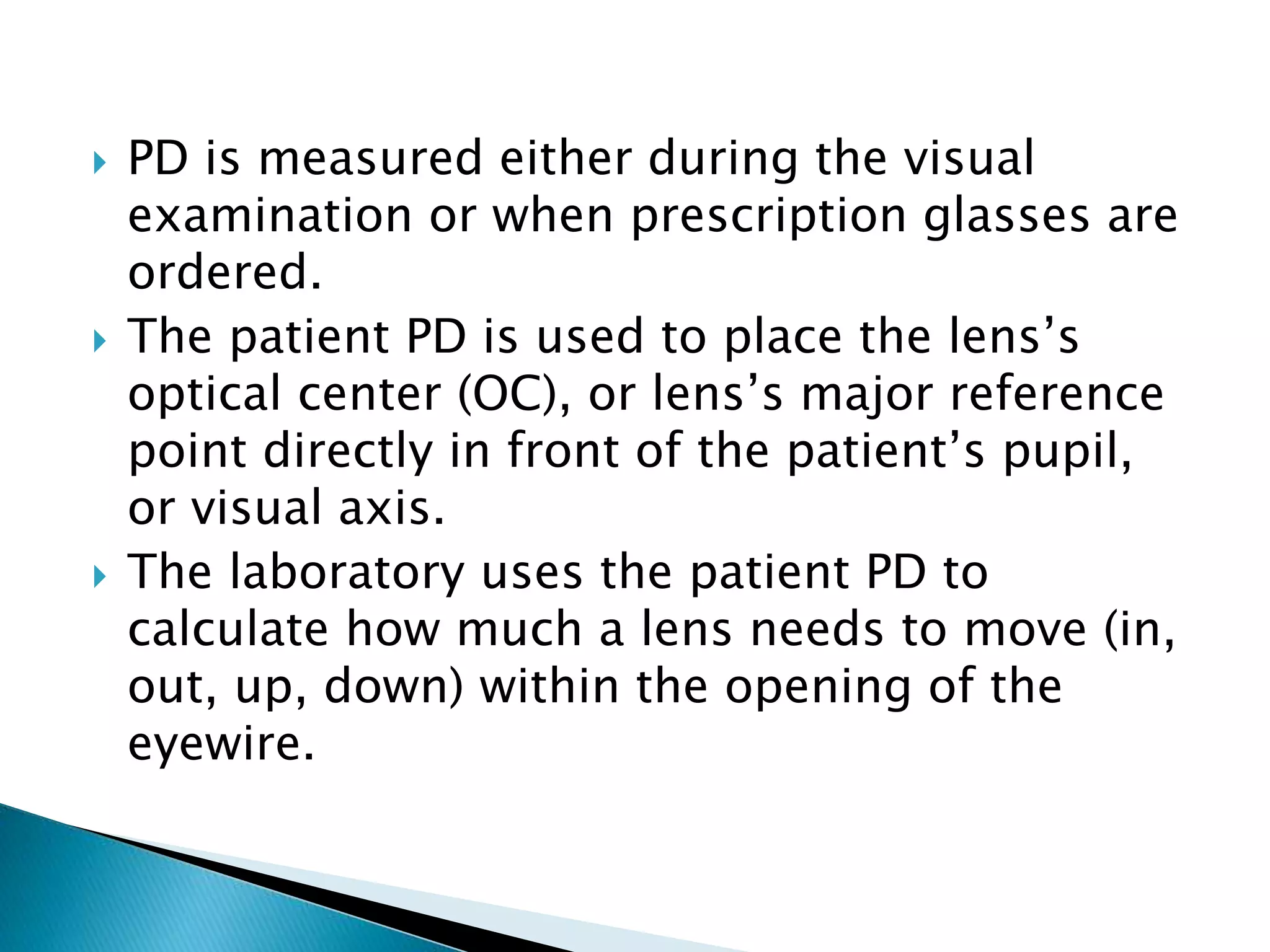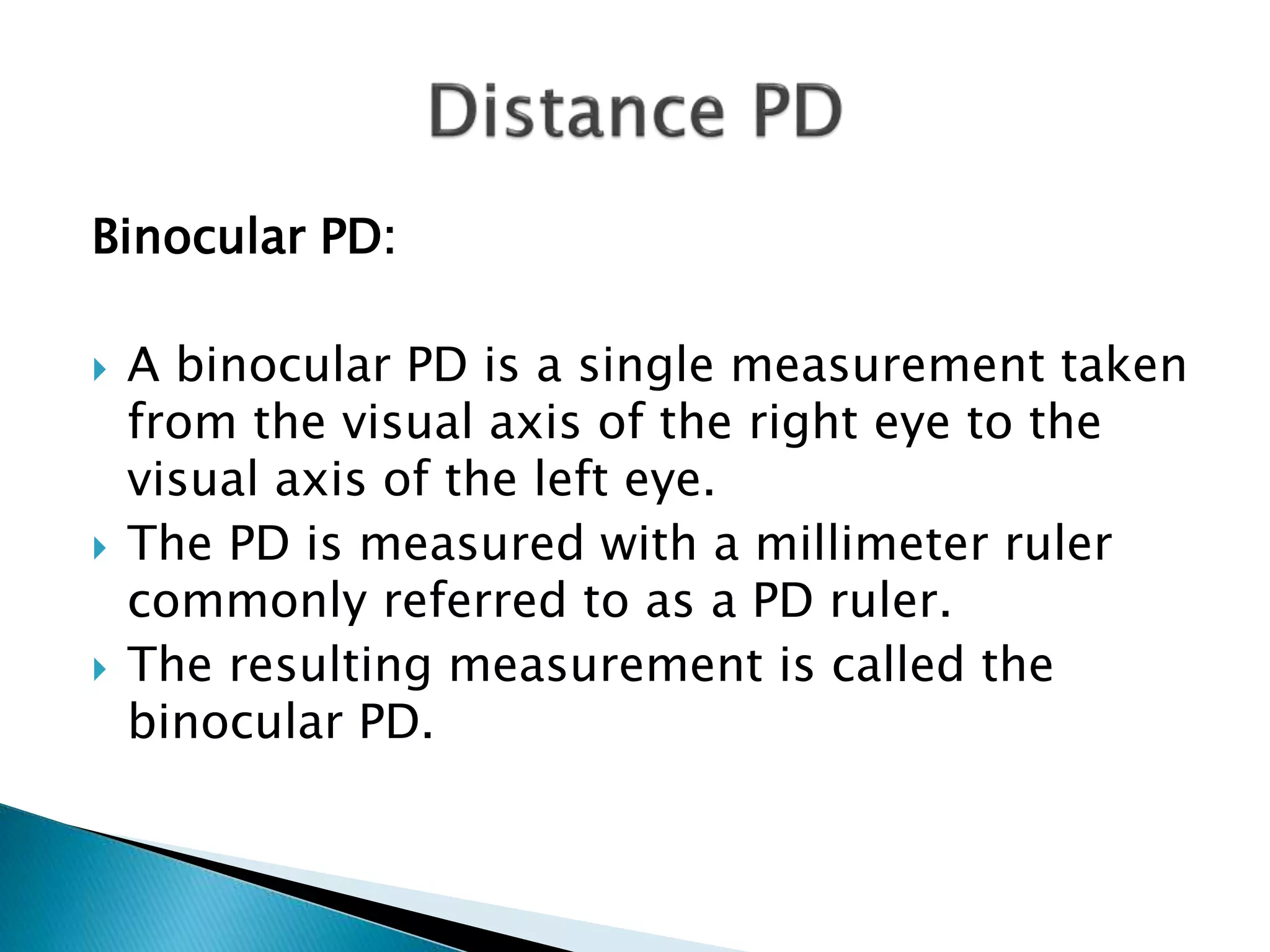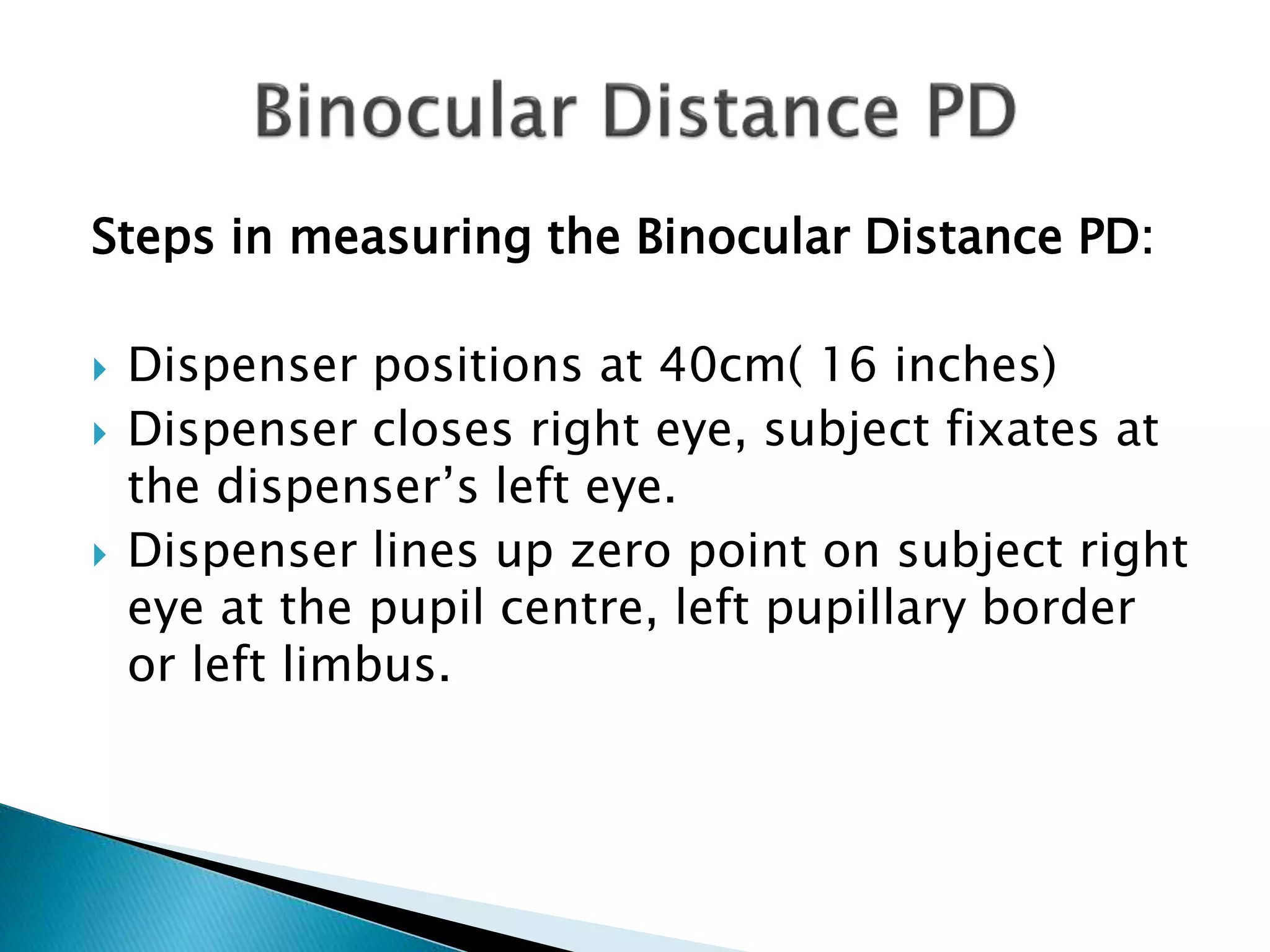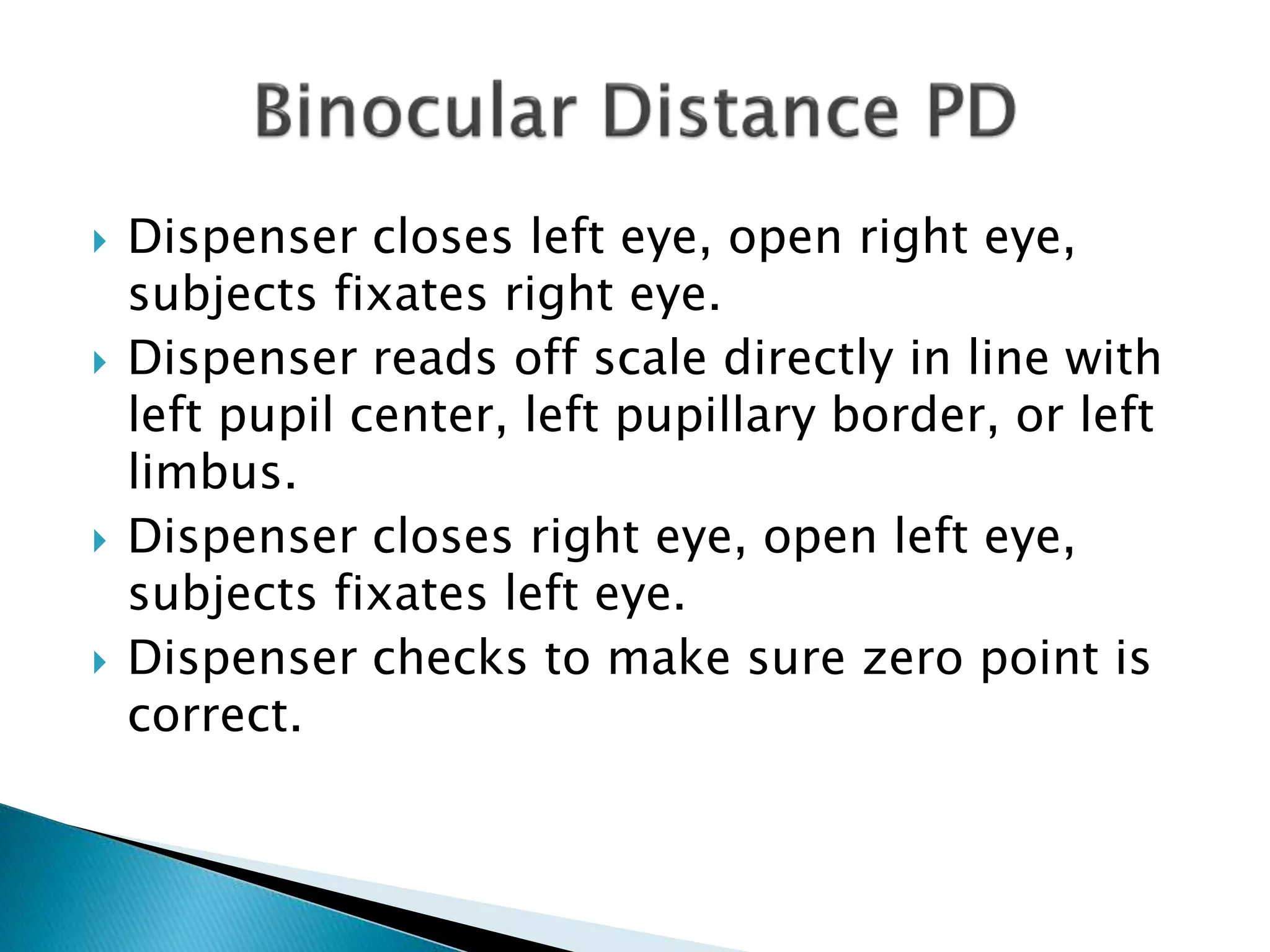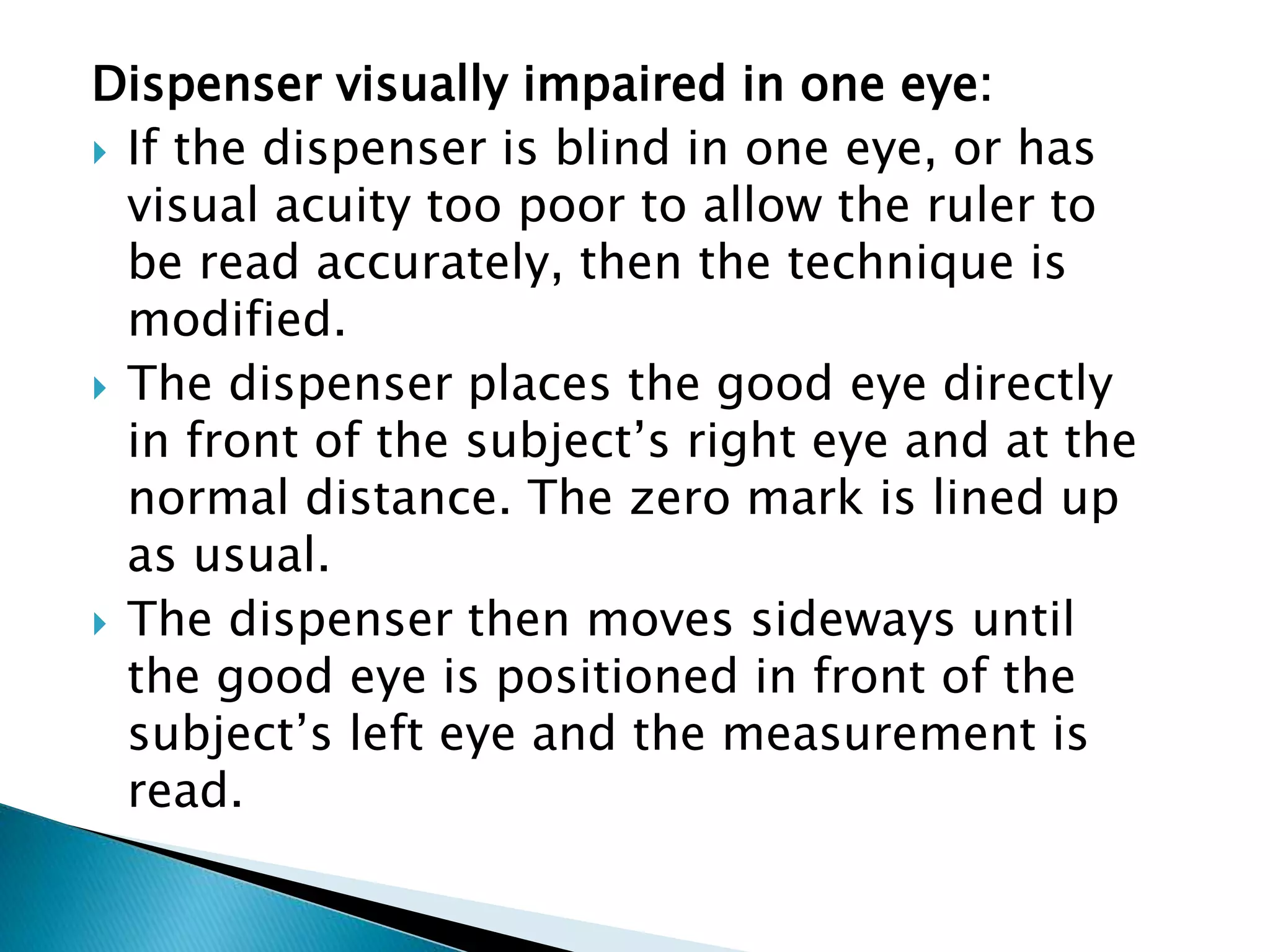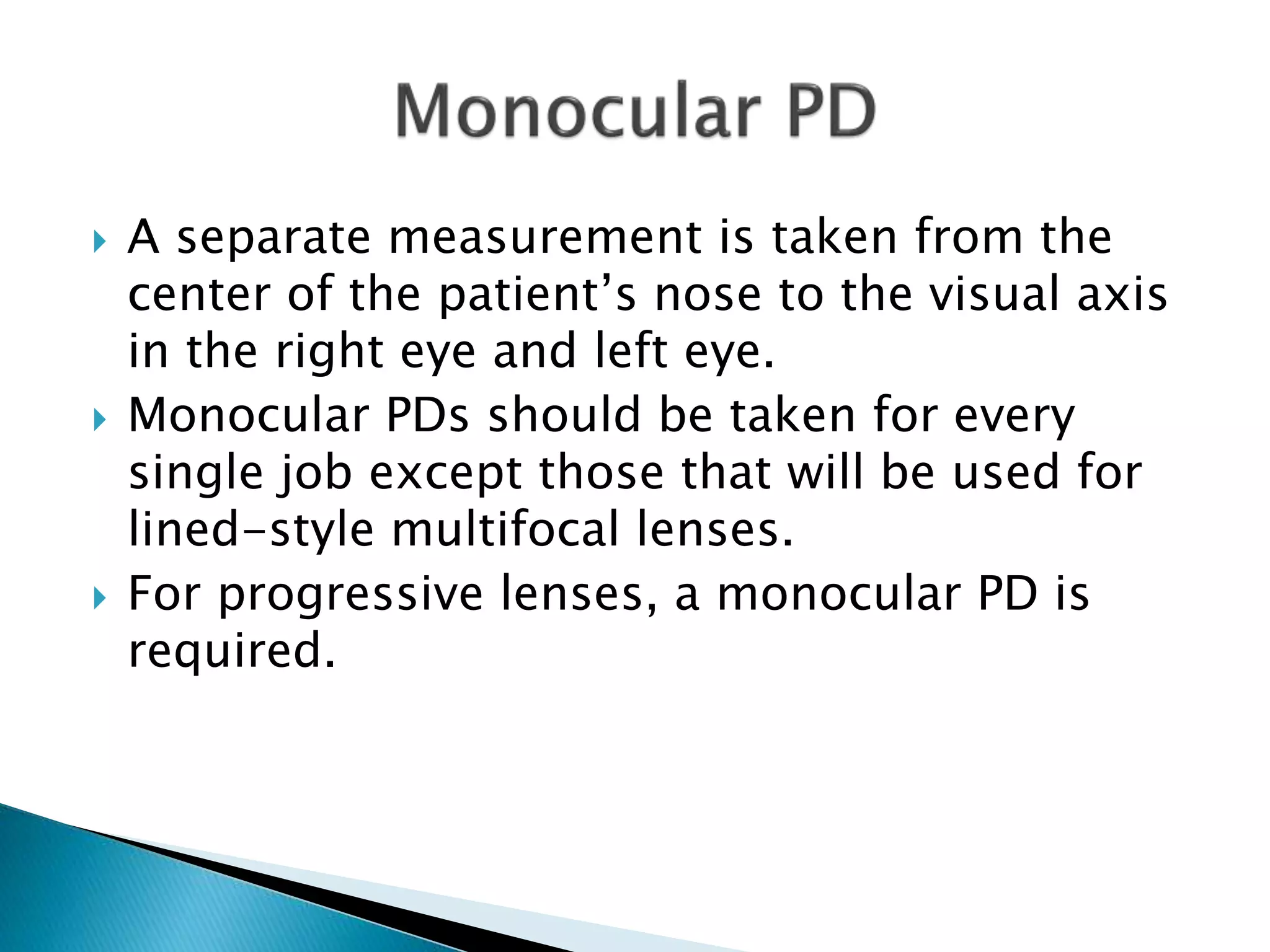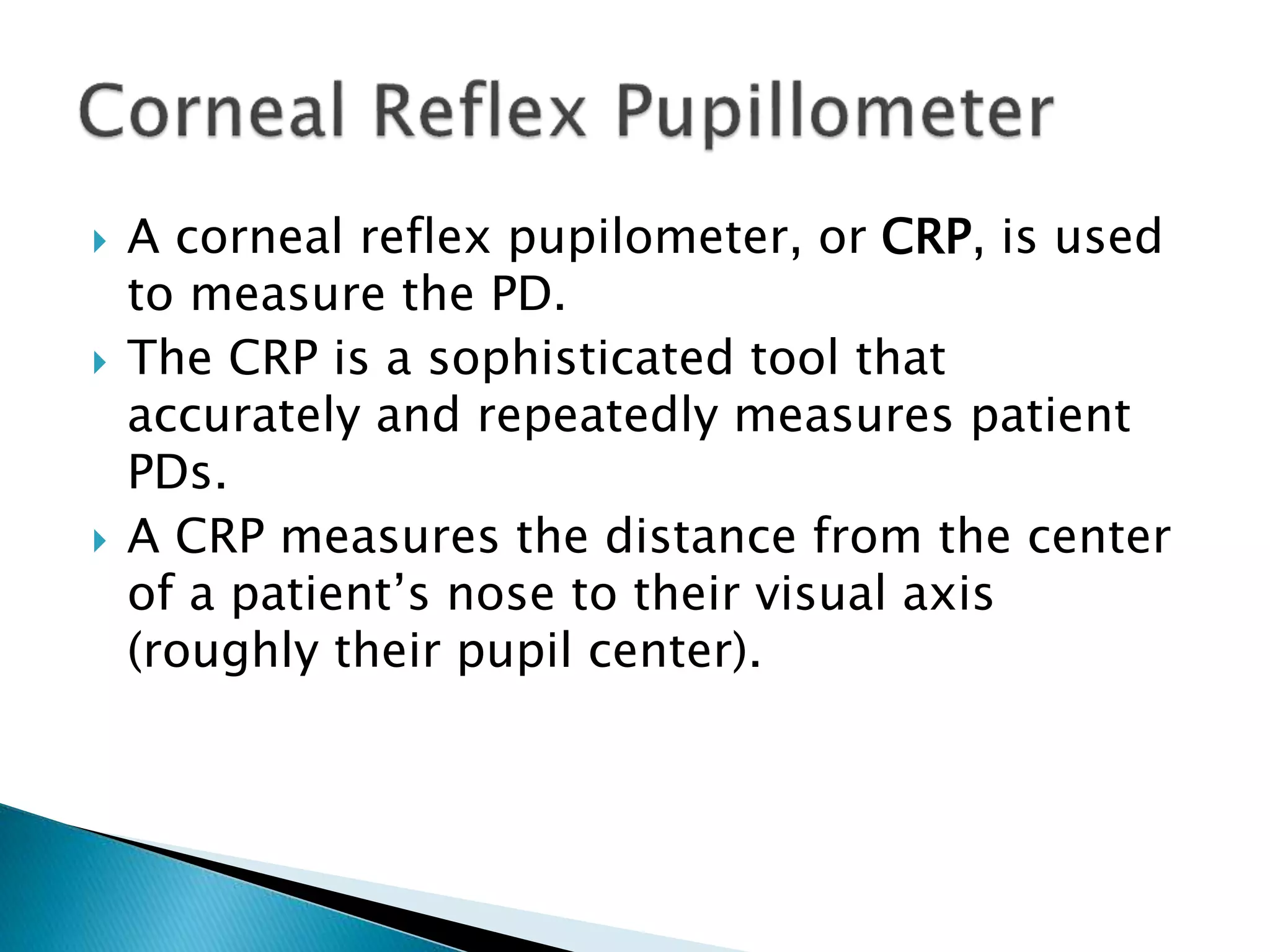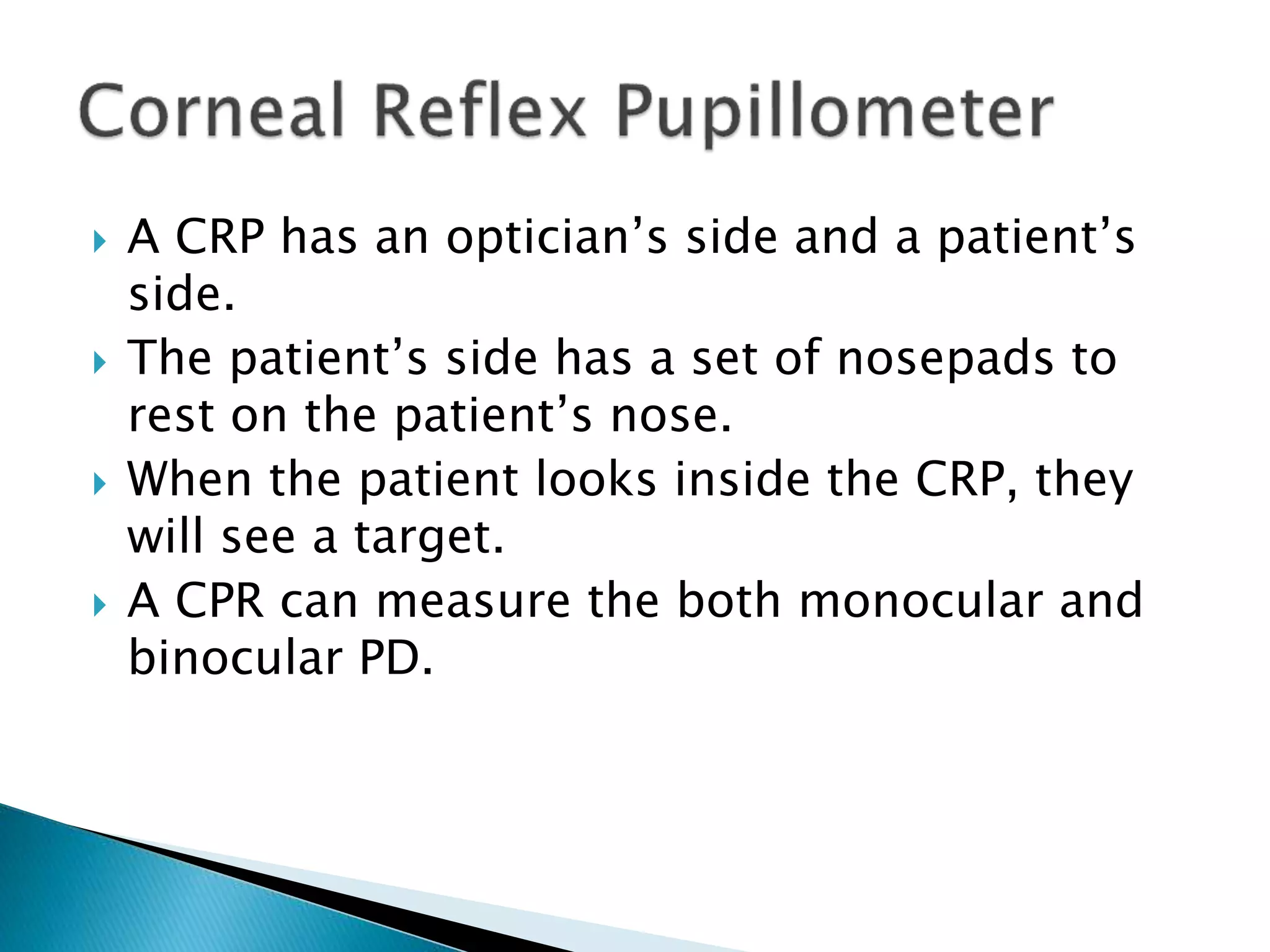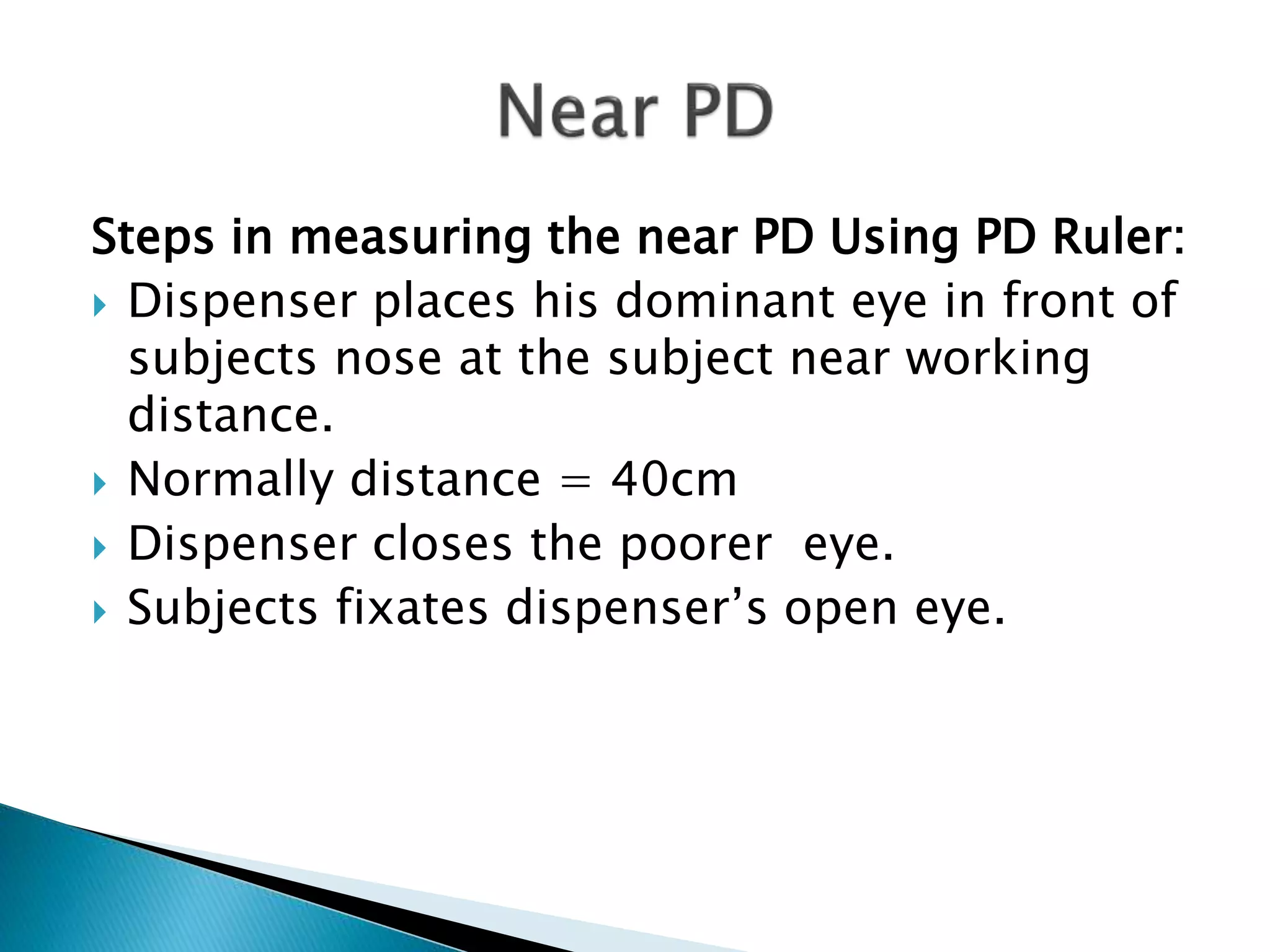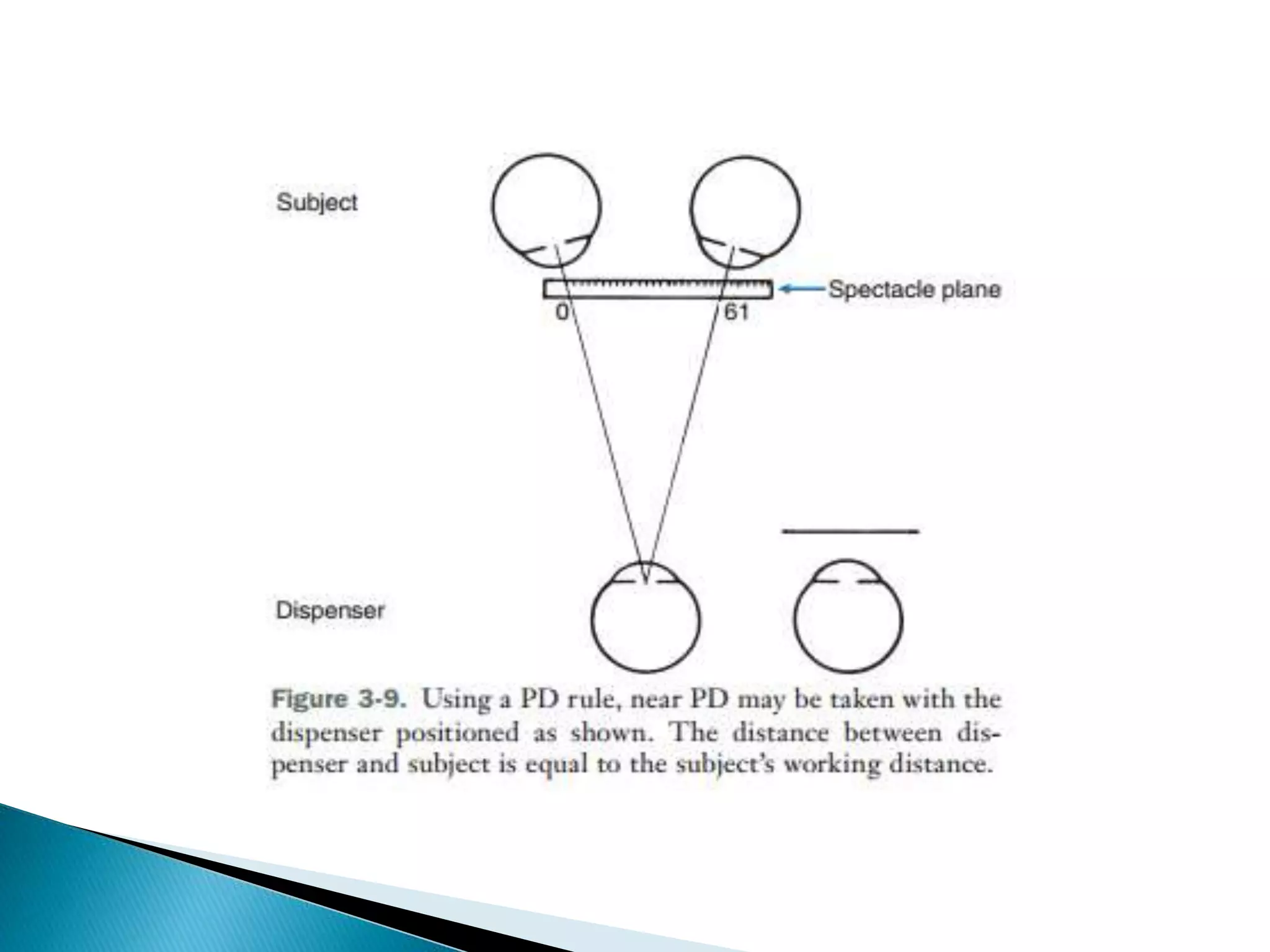This document discusses pupil distance (PD), which is the distance between the centers of the pupils. It provides information on measuring binocular PD, monocular PD, and near PD. Binocular PD is measured from one pupil to the other using a ruler. Monocular PD measures each eye individually. Near PD is needed for reading glasses and is measured at a closer distance. Accurate PD measurement is important for properly positioning lenses in prescription glasses.


